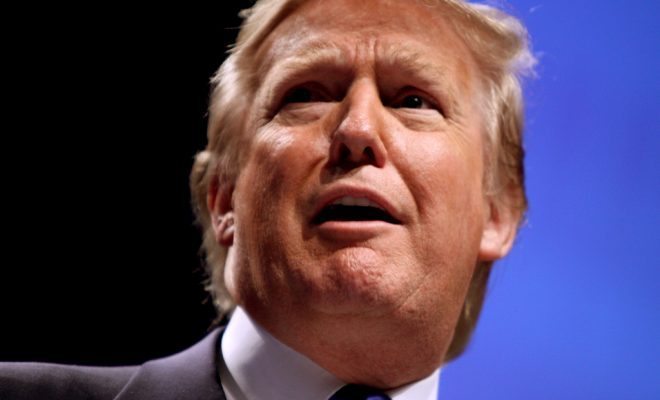 "Donald Trump" Courtesy of [Gage Skidmore via Flickr]
"Donald Trump" Courtesy of [Gage Skidmore via Flickr]
Elections
As General Election Nears, Trump’s “Presidential Side” Still Nowhere To Be Seen
His Republican opponents have faded away. His party has largely–if hesitantly–embraced him, including the top elected Republican, Paul Ryan. A fall showdown with Hillary Clinton seems inevitable at this point. But Donald Trump, the likely Republican presidential nominee who has promised his “presidential” side would appear come general election season, has, if anything, intensified his divisive rhetoric. He has doubled down on his controversial remarks from the primary campaign, and rebuffed advice from Republican statesmen who urged him to cultivate a more diplomatic image.
The popular narrative is that Trump’s true backers hardly care how “presidential” he acts, and if anything, they appreciate his bluster and perpetual flame fanning, as these behaviors affirm his outsider status. But what about voters who are on the fence about who to vote for in the coming general contest? What about those who are open to Trump, but only if he proves he can be a unifier, if he shifts his tone? How will they feel about the fact that Trump questioned a federal judge’s neutrality due to the judge “being Mexican” (he’s not–he was born in Indiana) last week and offered a similar analysis of Muslim judges over the weekend? He has made no efforts–at least in public appearances–to act the part of stately negotiator.
Rank and file Republicans–as well as members at the top of the party–have publicly rebuked Trump’s refusal to polish his speech and act like the part he is auditioning for.
“This is no longer the primaries. He’s no longer an interesting contender. He is now the potential leader of the United States and he’s got to move his game up to the level of being a potential leader,” Newt Gingrich said on “Fox News Sunday.” On Monday, Trump called Gingrich’s comments “inappropriate.”
“I think that he’s going to have to change,” said Senator Bob Corker (R-TN) on ABC’s “This Week.” Corker and Gingrich have both been mentioned as potential running mates for Trump.
Behind the scenes, through closed door meetings when cameras are not rolling and the public is not watching, Trump has made some strides to unite his party. Most recently, after weeks of deliberation, Paul Ryan, Speaker of the House, endorsed Trump, albeit more as a vote for the Republican party than the man leading the way. But in the eye of the public, where images are shaped, absorbed, and chiseled into the 24-hour news cycle, Trump has shown little effort to craft his image to appeal to a wider audience.
At a campaign rally in California on Friday, Trump sought to validate his support among blacks by singling out a man in the crowd. “Look at my African-American over here,” Trump said. That man, Gregory Cheadle, was not offended by the remark, even though he is not a Trump supporter, but an undecided voter who was there because “I have an open mind.” But these are questions for the rest of America, voters who receive his image through television appearances and soundbites–how will they perceive such episodes, and how might that affirm or alter their opinions of him?
Last week, at a news conference at the shimmering Trump Tower in New York, Trump essentially answered the question of how he intends to push forward through the summer and into the fall: “I’m not changing.”








Comments